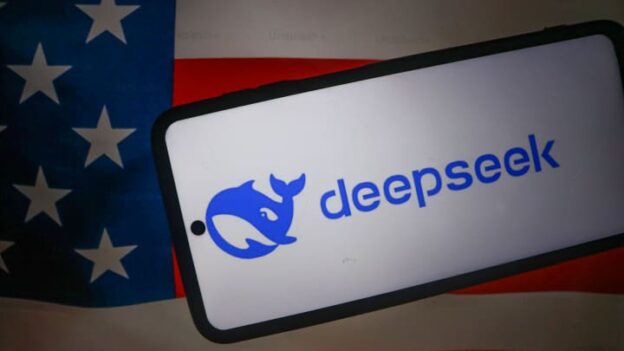- DeepSeek’s success represents a victory for open-source artificial intelligence models such as Meta’s Llama, industry experts told CNBC.
- Seena Rejal, chief commercial officer of AI startup NetMind, told CNBC DeepSeek shows that open-source AI is “no longer just a non commercial research initiative but a viable, scalable alternative to closed models” like OpenAI’s GPT.
- There are downsides to open-source AI, however — including the risk of cyber exploitation.
DeepSeek’s powerful new artificial intelligence model isn’t just a win for China — it’s a victory for open-source versions of the tech from the likes of Meta, Databricks, Mistral and Hugging Face, according to industry experts who spoke with CNBC.
Last month, DeepSeek released R1, an open-source reasoning model that claims to rival the performance of OpenAI’s o1 model using a cheaper, less energy-intensive process.
The development caused the market values of Nvidia and other chipmakers to plummet on fears that it could lead to reduced spending on high-performance computing infrastructure.
DeepSeek is a Chinese AI lab that focuses on developing large language models with the ultimate aim of achieving artificial general intelligence, or AGI. It was founded in 2023 by Liang Wenfeng, co-founder of AI-focused quantitative hedge fund High-Flyer.
AGI loosely refers to the idea of an AI that equals or surpasses human intellect on a wide range of tasks.
What is open-source AI?
Since OpenAI’s ChatGPT burst onto the scene in November 2022, AI researchers have been working hard to understand and improve upon the advances of the foundational large language model technology that underpins it.
One area of focus for many labs has been open-source AI. Open source refers to software whose source code is made freely available on the open web for possible modification and redistribution.
Plenty of firms from tech giants like Meta to scrappier startups such as Mistral and Hugging Face have been betting on open-source as a way to improve on the technology while also sharing important developments with the wider research community.
How DeepSeek empowered open source
DeepSeek’s technological breakthrough has only made the case for open-source AI models stronger, according to some tech executives.
Seena Rejal, chief commercial officer of AI startup NetMind, told CNBC the Chinese firm’s success shows that open-source AI is “no longer just a non commercial research initiative but a viable, scalable alternative to closed models” like OpenAI’s GPT.
“DeepSeek R1 has demonstrated that open-source models can achieve state-of-the-art performance, rivaling proprietary models from OpenAI and others,” Rejal told CNBC. “This challenges the belief that only closed-source models can dominate innovation in this space.”
Rejal isn’t alone. Yann LeCun, Meta’s chief AI scientist, said DeepSeek’s success represents a victory for open-source AI models, not necessarily a win for China over the United States. Meta is behind a popular open-source AI model called Llama.
“To people who see the performance of DeepSeek and think: ‘China is surpassing the U.S. in AI.’ You are reading this wrong. The correct reading is: ‘Open source models are surpassing proprietary ones’,” he said in a post on LinkedIn.
https://www.cnbc.com/amp/2025/02/04/deepseek-breakthrough-emboldens-open-source-ai-models-like-meta-llama.html





